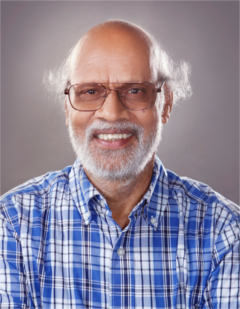This article has multiple issues. Please help improve it or discuss these issues on the talk page . (Learn how and when to remove these messages)
|
Daya Shankar Kulshreshtha | |
|---|---|
 Daya Shankar Kulshreshtha at Delhi University in August 2017 | |
| Born | December 5, 1951 |
| Alma mater | Delhi University Jiwaji University |
| Known for | Quantum field theory, Light front quantization, Boson stars |
| Scientific career | |
| Fields | Theoretical Physics |
| Institutions | University of Delhi |
| Doctoral advisor | R. P. Saxena (Delhi) |
Daya Shankar Kulshreshtha (born December, 1951) is an Indian theoretical physicist, specializing in formal aspects of quantum field theory, string theory, supersymmetry, supergravity and superstring theory, Dirac's instant-form and light-front quantization of field theories and D-brane actions. [1] His work on the models of gravity focuses on the studies of charged compact boson stars and boson shells. [1]